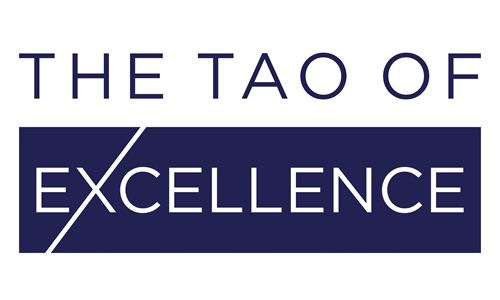From May 2020, the EU’s new medical devices regulation (MDR 2017/745) and in vitro diagnostic medical devices regulation (IVDR 2017/746) will reshape medtech market in its entirety. Following the intensive workshop (Tactical Session) we presented last week in Schaffhausen—and reported in the Schaffhauser Nachrichten—we have selected a series of articles published this year that shed light on the MDR process. This material represents the most relevant steps, stages and phases for manufacturers implementing the MDR, alongside a brief abstract of each article.
Secure your business in Europe through MDR compliance
6 steps manufactures can take to secure their compliance to the EU’s MDR. This includes reviewing your product portfolio to identify which devices are affected, identifying and connecting to a Notified Body (NB), upgrading your Quality Management System via a gap analysis, reviewing technical documentation to receive a product’s Unique Device Identification (UDI), a cost-benefit analysis to create the right strategy for your company, and communicating with distributors, importers and authorised representatives to ensure that your supply chain can meet your regulatory requirements.
Taking a closer look at the MDR
In light of the information and guidance documents released by the European Commission and endorsed by the Medical Device Coordination Group (MDCG), we list the external and internal factors that will affect your MDR certification. Such as the UDI, the European databank on medical devices (Eudamed) and economic operators, as well as engaging motivating your team, specialised training and integrating your MDR project into the day to day running of your organisation.
5 Steps to an MDR Audit
This presents the key stages and order of events for preparing an MDR audit, including a strategy for your product submissions, performing a gap analysis, addressing differences between the MDD and MDR, and making sure that relevant roles are fully trained for an MDR audit.
Evaluating your clinical data under the MDR
Clinical data can be described as the lifeblood of the MDR, yet the majority of manufacturers are in the dark as to whether they have sufficient data to pass MDR certification. This article outlines two strategies that can evaluate the MDR status of your current clinical data. The first uses the recently released MDCG 2019-9 document Summary of safety and clinical performance as a checklist, whilst the second draws on the wealth of information you can access and analyse via public databases such as ClinicalTrials.gov or opendata.swiss.
Begin your data collection for the Eudamed today
Eudamed is essential to the functioning of the MDR. Alongside an overview of this database, its function, content and current status, we advised manufacturers to use the specifications of the MDR as a checklist or guide to begin their data collection. This article includes a timeline and the steps you can take to strategize your data collection in advance of the functional specifications documents for Eudamed.
Addendum:
Following this publication, the EC released several Eudamed documents in May, including the Eudamed UDI device data dictionary, MDR and IVDR data sets, MDCG 2018-1 V2 guidance on Basic UDI and changes, and data exchange introduction, definitions, and guidelines.
Although the introduction of Eudamed will now be delayed until in May 2022, we recommend that you plan your data collection according to the original scheduling as different systems need to be deployed in order to secure MDR compliance, even without the planned launch in Eudamed 2020.
The Basic UDI and its role
A clear and concise definition of what a Basic UDI is, why is needed, how it is connected to the UDI-DI, where it will be found, its format, and how it will be issued. As “the primary identifier of a device model” and a key characteristic of the MDR, the UDI represents both the digital transformation of the medical devices industry and its drive for a safer and more transparent market.
Tracking the UDI System
This is a deeper dive into the intricacies of the UDI and its MDR compliance. From its purpose in the EU through to its components, classification timeline and regulatory requirements (which are also defined by the type of device), we’ve summarised the scope of the UDI in the context of the MDR.
Identify your PRRC
The person responsible for regulatory compliance (PRRC) has been defined by the MDR as a mandatory role for any company wishing to access the EU market after May 2020. This article outlines the regulatory requirements for this role, such as qualifications and responsibilities, how to appoint a PRRC, and the specifications in relation to the size of a company or organisations outside of the EU.
Redefining distributors in a new light
The EU’s new MDR recognises for the first time the important role economic operators play in the supply chain. Newly defined as ‘distributors’, these are “any natural or legal person in the supply chain, other than the manufacturer or the importer, that makes a device available on the market.” This article covers their new role, responsibilities and wider obligations such as reporting to competent authorities (CA) and our recommendation that they implement a quality management system based on the ISO 13485.
How we can help
The Tao of Excellence offers extensive regulatory expertise in the EU’s MDR. Our specialists can provide hands-on support and experience preparing for the MDR and certification process. We offer individual services such as gap analysis, audit preparation and quality management system design, as well as integrated and holistic approaches that cover clinical data reviews and the digital transformation of company processes and procedures. To learn more about our team and our services visit our website or contact us for information.
You can also follow us on social media to review the articles and information that we share each week, and we would be delighted to speak to you at our next presentation at the MedTech & Pharma Platform conference in Basel, 24–25 October 2019.
 Jasminka Roth
Jasminka Roth
Founder and Director of The Tao of Excellence
Phone
+41 52 685 51 65
Email
[email protected]
 Henrietta Shirley
Henrietta Shirley
Editor
Phone
+41 52 685 51 65
Email
[email protected]
Follow us on LinkedIn and Twitter!

